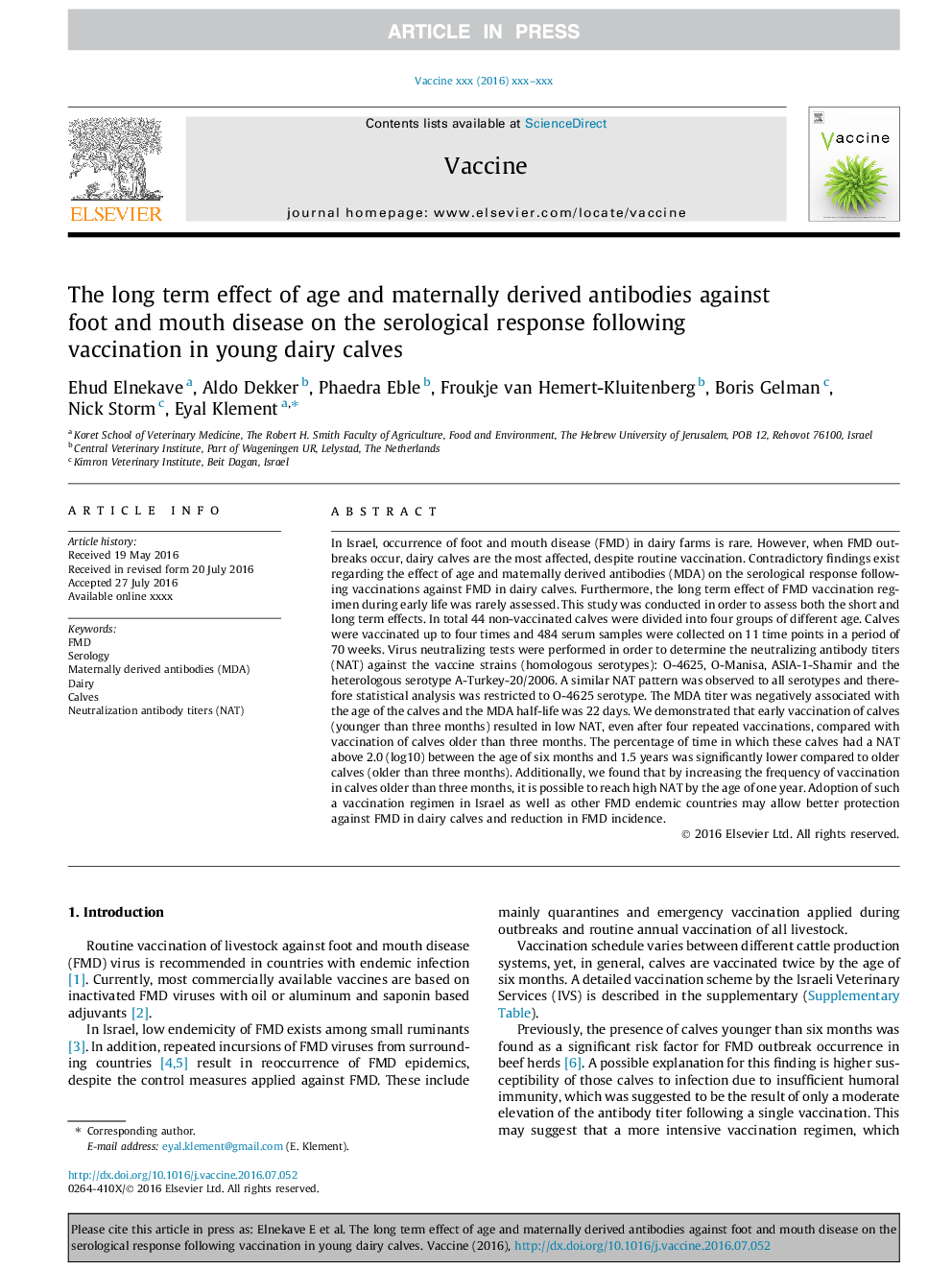| کد مقاله | کد نشریه | سال انتشار | مقاله انگلیسی | نسخه تمام متن |
|---|---|---|---|---|
| 5537731 | 1402357 | 2016 | 8 صفحه PDF | دانلود رایگان |
عنوان انگلیسی مقاله ISI
The long term effect of age and maternally derived antibodies against foot and mouth disease on the serological response following vaccination in young dairy calves
ترجمه فارسی عنوان
اثر طولانی مدت آنتیبادیهای سن و جنس مونث علیه بیماری های دهان و دندان بر پاسخ سرولوژی واکسیناسیون در گوساله های شیری جوان
دانلود مقاله + سفارش ترجمه
دانلود مقاله ISI انگلیسی
رایگان برای ایرانیان
موضوعات مرتبط
علوم زیستی و بیوفناوری
ایمنی شناسی و میکروب شناسی
ایمونولوژی
چکیده انگلیسی
In Israel, occurrence of foot and mouth disease (FMD) in dairy farms is rare. However, when FMD outbreaks occur, dairy calves are the most affected, despite routine vaccination. Contradictory findings exist regarding the effect of age and maternally derived antibodies (MDA) on the serological response following vaccinations against FMD in dairy calves. Furthermore, the long term effect of FMD vaccination regimen during early life was rarely assessed. This study was conducted in order to assess both the short and long term effects. In total 44 non-vaccinated calves were divided into four groups of different age. Calves were vaccinated up to four times and 484 serum samples were collected on 11 time points in a period of 70Â weeks. Virus neutralizing tests were performed in order to determine the neutralizing antibody titers (NAT) against the vaccine strains (homologous serotypes): O-4625, O-Manisa, ASIA-1-Shamir and the heterologous serotype A-Turkey-20/2006. A similar NAT pattern was observed to all serotypes and therefore statistical analysis was restricted to O-4625 serotype. The MDA titer was negatively associated with the age of the calves and the MDA half-life was 22Â days. We demonstrated that early vaccination of calves (younger than three months) resulted in low NAT, even after four repeated vaccinations, compared with vaccination of calves older than three months. The percentage of time in which these calves had a NAT above 2.0 (log10) between the age of six months and 1.5Â years was significantly lower compared to older calves (older than three months). Additionally, we found that by increasing the frequency of vaccination in calves older than three months, it is possible to reach high NAT by the age of one year. Adoption of such a vaccination regimen in Israel as well as other FMD endemic countries may allow better protection against FMD in dairy calves and reduction in FMD incidence.
ناشر
Database: Elsevier - ScienceDirect (ساینس دایرکت)
Journal: Vaccine - Volume 34, Issue 41, 22 September 2016, Pages 4927-4934
Journal: Vaccine - Volume 34, Issue 41, 22 September 2016, Pages 4927-4934
نویسندگان
Ehud Elnekave, Aldo Dekker, Phaedra Eble, Froukje van Hemert-Kluitenberg, Boris Gelman, Nick Storm, Eyal Klement,
